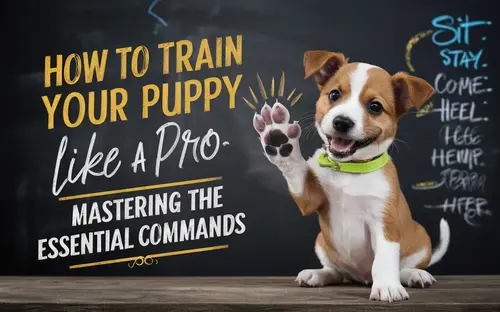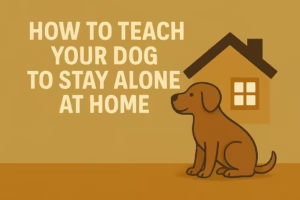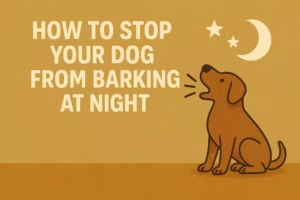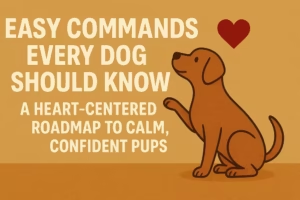Training your puppy is more than just teaching them a few tricks – it’s an opportunity to build a strong, lasting bond with your furry companion. When you invest time and patience into training, you’re communicating with your pup, establishing trust, and creating a foundation for a lifelong partnership. Just imagine being able to call your pup to you in any situation, knowing they’ll come running without hesitation. That’s the power of a well-trained dog!
But training isn’t just about teaching commands; it’s also about instilling good behaviors that will make your pup a well-mannered member of the family. Imagine having a pup that doesn’t jump on guests, beg at the table, or bark incessantly. Training can help you achieve that – and it all starts with mastering the essential commands.
Getting Started: The Basics of Puppy Training
Choosing the Right Treats and Rewards
Before you dive into training, it’s essential to stock up on the right tools. Treats and rewards are the key to motivating your pup and keeping them engaged during training sessions. Look for small, smelly treats that your pup goes crazy for, and consider using a mix of their regular kibble and high-value treats like boiled chicken or cheese.
Creating a Positive Learning Environment
Next, set the stage for success by creating a positive learning environment. Choose a quiet, distraction-free area for your training sessions, and keep them short and sweet – puppies have notoriously short attention spans. Remember, training should be fun for both of you, so approach each session with patience, enthusiasm, and plenty of praise.
Teaching the “Sit” Command
Step-by-Step Guide
The “sit” command is often the first one puppies learn, and it’s a great foundation for other commands. Here’s how to teach it:
- Hold a treat close to your pup’s nose and slowly move it back over their head. As they follow the treat, their bottom will naturally hit the floor.
- As soon as their bottom touches the ground, say “sit” and give them the treat and plenty of praise.
- Repeat this process, gradually adding the verbal cue before their bottom hits the ground.
Tips for Success
Remember, consistency is key. Use the same verbal cue and hand signal every time, and be patient – some puppies catch on more quickly than others. If your pup is struggling, try luring them into a sit with a treat held at nose level, or gently guiding their hindquarters down with your free hand.
Mastering the “Stay” Command
Why “Stay” is Crucial
Once your pup has mastered “sit,” it’s time to move on to the “stay” command. This one is crucial for keeping your pup safe and under control in various situations. Imagine being able to put your pup in a “stay” while you answer the door or tie your shoelaces without worrying about them running off.
Gradually Increasing the Distance
Teaching “stay” is all about gradually increasing the distance and duration of the stay. Start by asking your pup to stay for just a few seconds while you take a step back. As they succeed, increase the distance and time, and remember to reward them generously for holding their stay.
The “Come” Command: Keeping Your Pup Safe
Make It Fun and Rewarding
The “come” command is arguably the most important one for your pup’s safety. After all, you want to be able to call them back to you in any situation, whether it’s in the park or if they’ve slipped out the front door. To teach this command, make it fun and rewarding!
Use an excited, high-pitched voice to call your pup’s name and “come,” and reward them with treats and praise every time they come running. You can even practice the “come” command during playtime, calling them to you and then immediately tossing a toy or treating them when they arrive.
Avoiding Common Mistakes
One of the biggest mistakes owners make when teaching “come” is scolding their pup when they finally do come to them. Remember, your pup should always associate coming to you with something positive, never punishment. If they’ve done something naughty, deal with it separately – never scold them for coming when called.
Introducing Other Essential Commands
“Leave It” and “Drop It”
Once your pup has mastered the basics, you can start introducing other essential commands like “leave it” and “drop it.” These commands can help keep your pup safe by teaching them to leave potentially dangerous or undesirable items alone, and to drop anything they’ve picked up on command.
“Heel” and “Watch Me”
The “heel” command is a must-have for walks and outings, teaching your pup to walk calmly at your side without pulling or wandering. And “watch me” is a great way to get your pup’s attention and focus, which can be invaluable in distracting situations.
Consistency and Patience: The Keys to Success
Incorporating Training into Daily Life
As you work on these commands, remember that consistency and patience are key. Training shouldn’t be a one-and-done event – it’s an ongoing process that should be incorporated into your daily life. Take advantage of everyday situations to practice commands and reinforce good behaviors.
Celebrating Small Victories
Don’t forget to celebrate your pup’s successes, no matter how small. Training can be challenging, but those little wins – like your pup holding a “stay” for an extra few seconds or coming when called in a slightly distracting environment – are worth celebrating. Positive reinforcement and plenty of praise will keep your pup motivated and eager to learn.
Conclusion
Training your puppy may seem daunting, but with patience, consistency, and a positive attitude, you’ll be amazed at how quickly your furry friend picks up on the essential commands.
Remember, it’s not just about teaching tricks – it’s about building a strong bond, instilling good behaviors, and keeping your pup safe.
So grab those treats, put on your training hat, and get ready to have some fun with your pup!
File size
FAQs
Q1: How long should puppy training sessions last?
A: Puppy training sessions should be kept short, generally no more than 5-10 minutes at a time. Puppies have very short attention spans, so it’s best to have multiple brief sessions throughout the day rather than one long session.
Q2: What if my puppy won’t respond to a command during training?
A: If your puppy isn’t responding to a command, stay patient and don’t get frustrated. Try breaking the command down into smaller steps, using higher-value treats, or taking a break and trying again later. Consistency and positive reinforcement are key.
Q3: Is it better to use treats or praise when training my puppy?
A: It’s best to use a combination of treats and verbal praise when training your puppy. Treats are an excellent motivator, but verbal praise and affection are also important for building a positive association with the desired behavior.
Q4: Can I train my puppy without using treats?
A: While treats are highly recommended as a positive reinforcer, it is possible to train your puppy without them. You can use their favorite toy, playtime, or even a special treat-dispensing toy as a reward. However, most trainers find that treats work best, especially in the initial stages of training.
Q5: How do I prevent my puppy from getting distracted during training sessions?
A: Minimize distractions by training in a quiet, enclosed area initially. As your puppy masters commands, gradually introduce more distractions (like other pets or family members) to build their focus. Using high-value treats and keeping sessions short can also help maintain your puppy’s attention.








